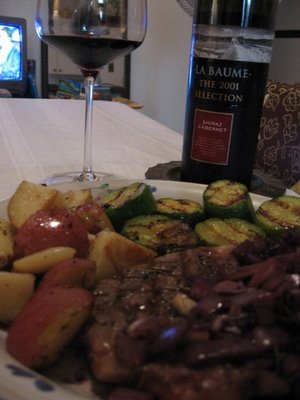
...back from Manhattan with lots of stories and images to share (mostly images). By tomorrow I hope to sort out my new ideas on archiving and posting so I can better present stuff on the site.
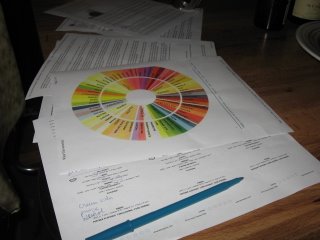 Papers papers everywhere... I knew that conducting my first formal tasting note would be an idea I'd like to try from the moment it was first suggested back in May by my favourite wine wizard Steve De Long on his site.
Papers papers everywhere... I knew that conducting my first formal tasting note would be an idea I'd like to try from the moment it was first suggested back in May by my favourite wine wizard Steve De Long on his site. Tasting session complete. Except the part of the form that Steve had left blank: food pairings. I was about to have dinner so I dove right in on this one. But the wine was unwilling. Suddenly its heady level of alcohol came screeching out. It seemed to lose its finesse at the dinner table, though my pairing of intensely flavoured veal, seared with sun-dried tomato and olive pasta was fairly well thought out for the occasion. I tried it again with dinner the next night, but nothing in the wine clicked with food like it did on its own during the tasting. And this was very disheartening but not surprising. I shy away from a lot of Rhône wines precisely because of this. Whether they are too alcoholic or don't have enough acidity to compete with the food I most often make, I can't say.
Tasting session complete. Except the part of the form that Steve had left blank: food pairings. I was about to have dinner so I dove right in on this one. But the wine was unwilling. Suddenly its heady level of alcohol came screeching out. It seemed to lose its finesse at the dinner table, though my pairing of intensely flavoured veal, seared with sun-dried tomato and olive pasta was fairly well thought out for the occasion. I tried it again with dinner the next night, but nothing in the wine clicked with food like it did on its own during the tasting. And this was very disheartening but not surprising. I shy away from a lot of Rhône wines precisely because of this. Whether they are too alcoholic or don't have enough acidity to compete with the food I most often make, I can't say.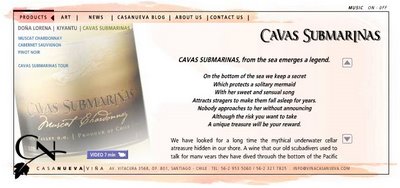
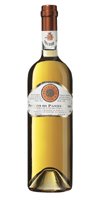
 The Oxford Companion to Wine describes Moscato Passito-di-Pantelleria, a DOC appellation, as Italy's finest dessert wine -- lush, rich and more in the true dessert style than the less reputable, generic label simply called Moscato di Pantelleria ("passito" is the Italian term for dried grape wines).
The Oxford Companion to Wine describes Moscato Passito-di-Pantelleria, a DOC appellation, as Italy's finest dessert wine -- lush, rich and more in the true dessert style than the less reputable, generic label simply called Moscato di Pantelleria ("passito" is the Italian term for dried grape wines).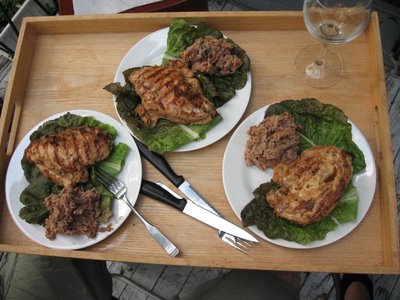 The current wave of high heat and humidity peaked yesterday in Montreal. When it gets so insufferably hot, I require new strategies to continue to eat and drink in a civilized manner.
The current wave of high heat and humidity peaked yesterday in Montreal. When it gets so insufferably hot, I require new strategies to continue to eat and drink in a civilized manner.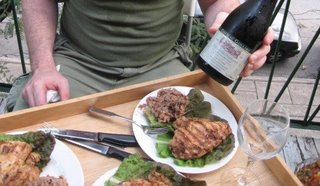 Place chillable reds in the freezer: This step is even easier when you have savvy guests like Gordon, who always show up with just the right chillable selection. Though my prepared dinners were from the southern French school of cooking, and despite the fact that a light and spicy Rhône red is always a good candidate for chilling, we ended up opening a Loire red called Château Gaillard (Touraine-Mesland 2004) -- you can click on the image for more on currently available vintages -- and then followed it with the Dominio del Arenal Utiel-Requena 2005, a red from western Spain whose D.O. (Denomination of Origin) takes its name from regional towns located near Valencia. It had equally elegant fruit as the Touraine-Mesland did and joined in perfectly mid-way through dinner. Perhaps at first it was a bit cold from its time in the freezer but on this particular day it got up to a suitable 16 degrees before you could finish your first glass.
Place chillable reds in the freezer: This step is even easier when you have savvy guests like Gordon, who always show up with just the right chillable selection. Though my prepared dinners were from the southern French school of cooking, and despite the fact that a light and spicy Rhône red is always a good candidate for chilling, we ended up opening a Loire red called Château Gaillard (Touraine-Mesland 2004) -- you can click on the image for more on currently available vintages -- and then followed it with the Dominio del Arenal Utiel-Requena 2005, a red from western Spain whose D.O. (Denomination of Origin) takes its name from regional towns located near Valencia. It had equally elegant fruit as the Touraine-Mesland did and joined in perfectly mid-way through dinner. Perhaps at first it was a bit cold from its time in the freezer but on this particular day it got up to a suitable 16 degrees before you could finish your first glass.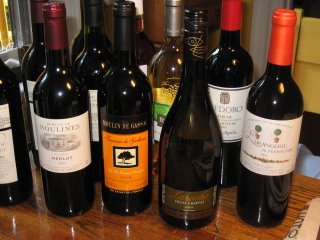 On the weekend I took my friend Jane shopping for wine. I love shopping for wine and Jane wanted to take advantage of a "save on six" sale at the liquor store. She ended up getting 12 bottles so the extra hands helped in carrying the wine home.
On the weekend I took my friend Jane shopping for wine. I love shopping for wine and Jane wanted to take advantage of a "save on six" sale at the liquor store. She ended up getting 12 bottles so the extra hands helped in carrying the wine home. 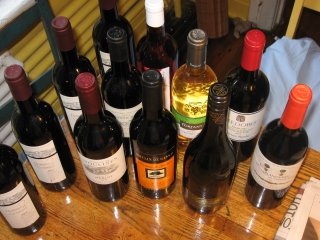
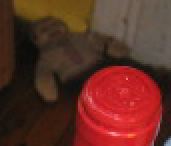
 - "Viva Italia!"
- "Viva Italia!"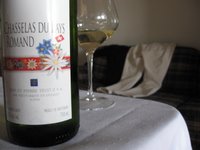 Amélie was likely stressed that her French football team couldn't rise above the situation to win the match like she had done on the court against the wiles of Justine Hénin-Hardenne just one day earlier. I'm sure if she had some lovely wine like the Testuz Chasselas du Pays Romand in reach she'd enjoy it nonetheless. She earned that and much more with a solid and well-constructed victory.
Amélie was likely stressed that her French football team couldn't rise above the situation to win the match like she had done on the court against the wiles of Justine Hénin-Hardenne just one day earlier. I'm sure if she had some lovely wine like the Testuz Chasselas du Pays Romand in reach she'd enjoy it nonetheless. She earned that and much more with a solid and well-constructed victory.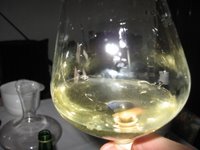 Chasselas is the white grape of Switzerland, especially the French-speaking western regions of Valais, Vaud and Geneva, where it makes up the vast majority of grape yields. Like its homeland, Chasselas is known as a neutral grape and interesting only when in the hands of reputable vintners who can use it to coax out aromatic characteristics of the terroir. Hugh Johnson writes that the Chasselas of Valais is typically racy or exotic; Vaud's is refined and full; and Geneva's is simply elegant.
Chasselas is the white grape of Switzerland, especially the French-speaking western regions of Valais, Vaud and Geneva, where it makes up the vast majority of grape yields. Like its homeland, Chasselas is known as a neutral grape and interesting only when in the hands of reputable vintners who can use it to coax out aromatic characteristics of the terroir. Hugh Johnson writes that the Chasselas of Valais is typically racy or exotic; Vaud's is refined and full; and Geneva's is simply elegant.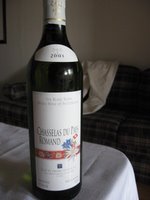 My purchase wasn't a direct mapping to any of the above, though Valais is perhaps the best fit in retrospect. Overall, I would label Testuz Chasselas du Pays Romand 2003 flinty and slightly fizzy (which supposedly is a trait of northern Neuchatel's Chasselas). But if trademark characteristics don't come through it is likely due to the fact that this Chasselas du Pays Romand is a vin de pays and as such sidesteps around the three big appellations of these French cantons.
My purchase wasn't a direct mapping to any of the above, though Valais is perhaps the best fit in retrospect. Overall, I would label Testuz Chasselas du Pays Romand 2003 flinty and slightly fizzy (which supposedly is a trait of northern Neuchatel's Chasselas). But if trademark characteristics don't come through it is likely due to the fact that this Chasselas du Pays Romand is a vin de pays and as such sidesteps around the three big appellations of these French cantons.

